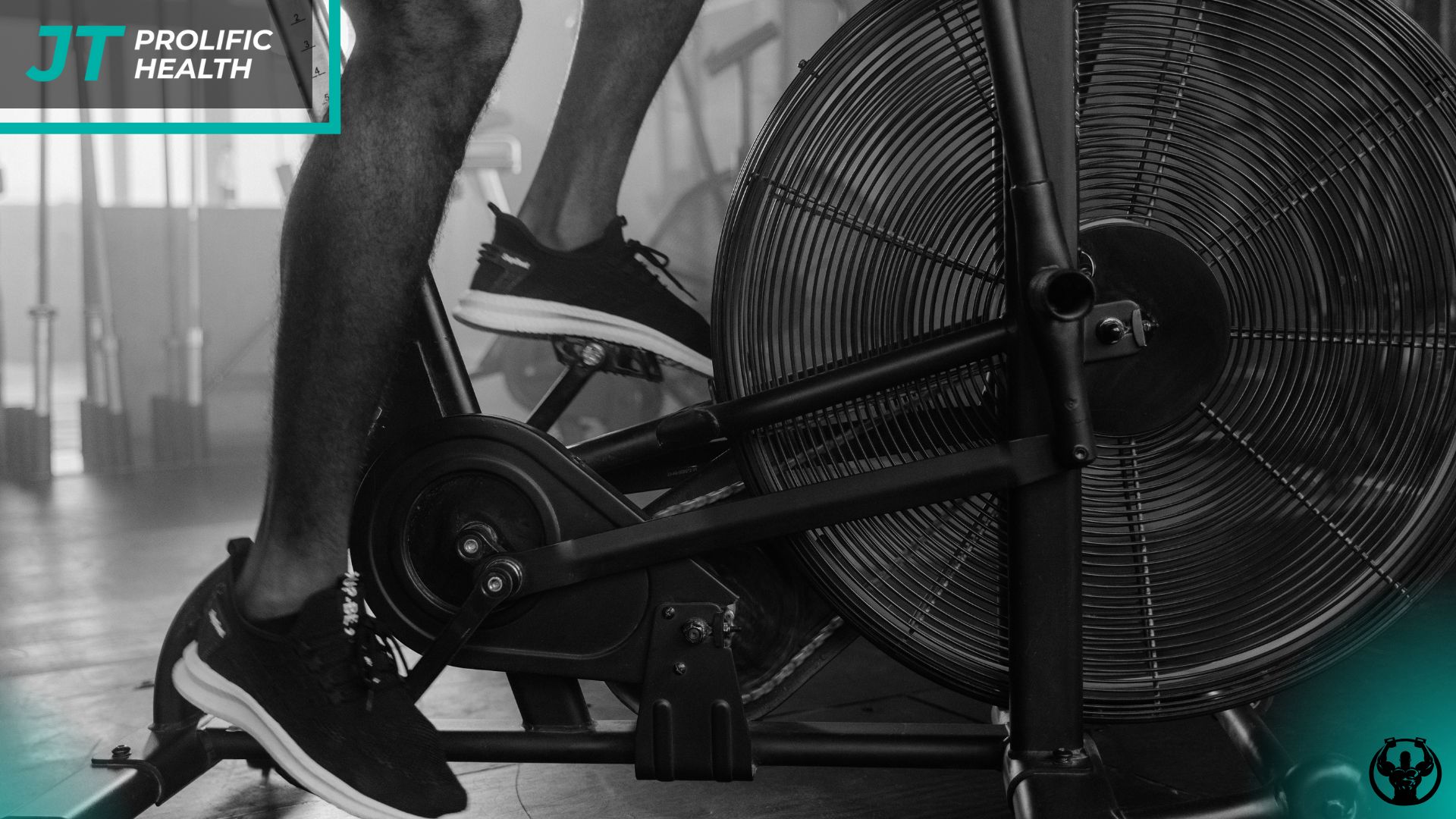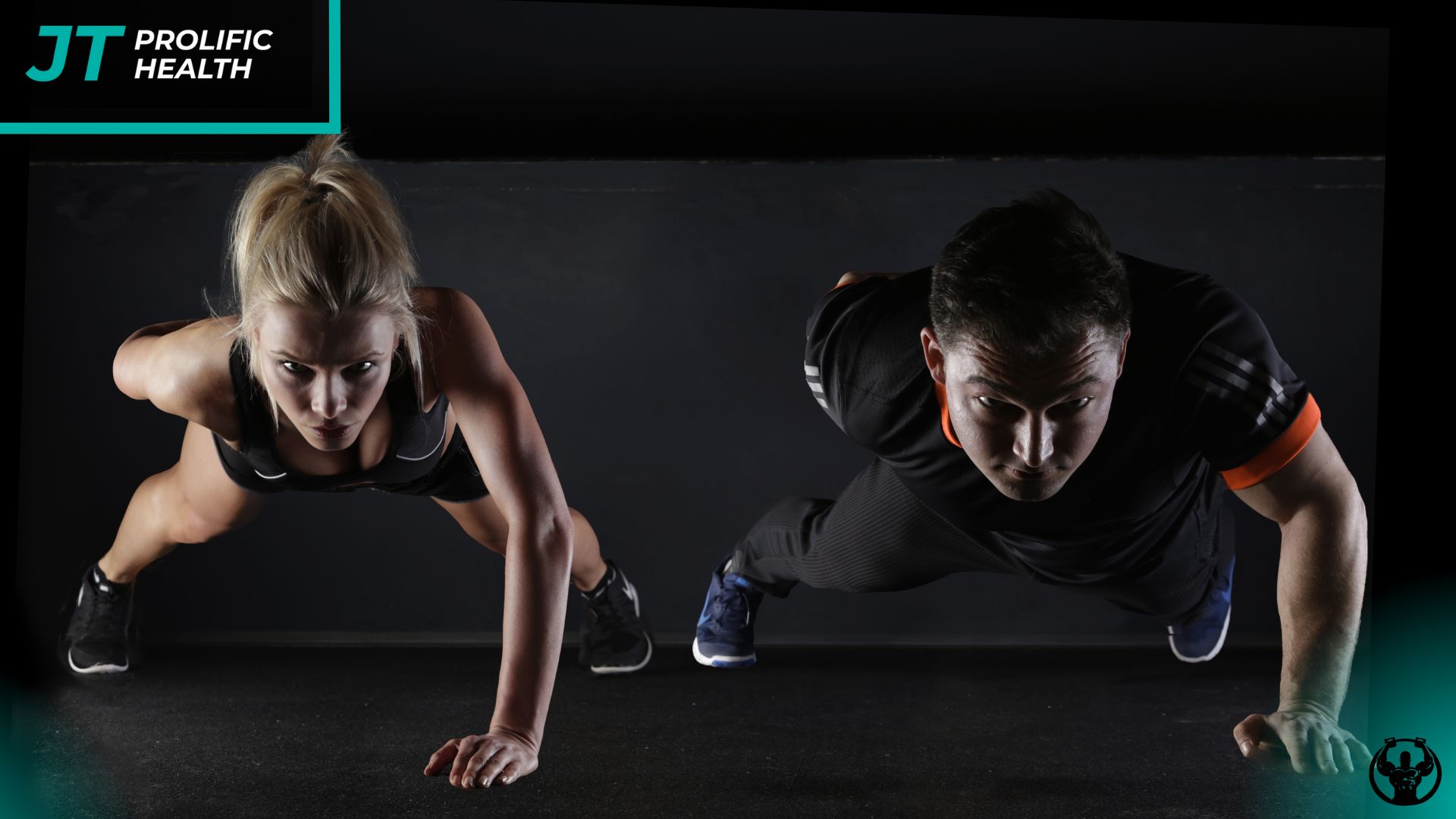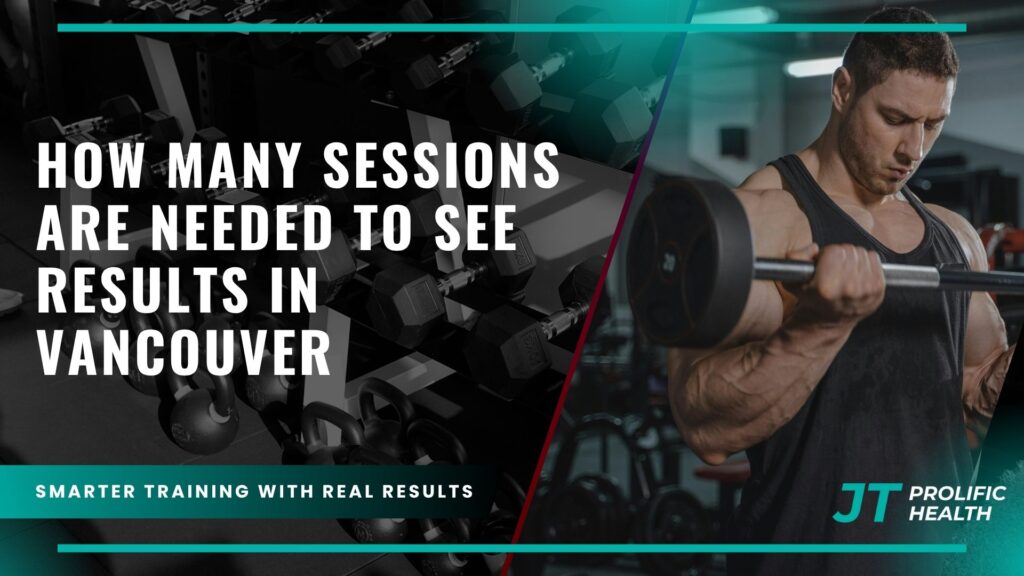When embarking on a fitness journey in Vancouver, one of the most common questions clients ask is how many training sessions they’ll need before seeing tangible results. This question reflects a natural desire to understand the timeline and commitment required for meaningful transformation. The answer, however, isn’t as straightforward as many hope, as it depends on numerous factors including your starting fitness level, specific goals, training frequency, and individual physiological responses.
Vancouver’s fitness landscape is diverse and competitive, with personal trainers who understand that each client’s journey is unique. While some individuals may notice improvements in energy levels and mood within just a few sessions, visible physical changes and significant strength gains typically require a more sustained commitment. The key lies in understanding what constitutes “results” and setting realistic expectations based on scientific principles of exercise adaptation.
Research in exercise physiology suggests that the human body begins adapting to new training stimuli almost immediately, but the timeline for noticeable changes varies significantly. Neurological adaptations, which improve coordination and muscle activation patterns, often occur within the first two to three weeks of consistent training. These early adaptations can lead to improved performance and strength gains even before visible muscle changes occur.
For most Vancouver residents starting a new fitness program, the first four to six weeks represent a critical adaptation period. During this time, your body is learning new movement patterns, building foundational strength, and establishing the neural pathways necessary for more advanced training. Personal trainers in Vancouver typically design initial programs that focus on proper form, basic movement patterns, and gradual progression to ensure clients build a solid foundation for long-term success.
The frequency of training sessions plays a crucial role in determining how quickly you’ll see results. Most fitness professionals recommend a minimum of two to three sessions per week for beginners, with more experienced individuals potentially benefiting from four to five weekly sessions. However, the quality of each session often matters more than quantity, which is why working with qualified professionals who understand effective program design principles can significantly accelerate your progress.
Key Takeaways
For additional context, see this comprehensive guide.
- Initial neurological adaptations occur within 2-3 weeks: Your nervous system begins improving muscle coordination and activation patterns almost immediately, leading to better performance before visible changes appear.
- Visible physical changes typically emerge after 4-6 weeks: Most clients begin noticing improvements in muscle tone, body composition, and overall appearance after consistent training for approximately one month.
- Strength gains accelerate between weeks 6-12: Significant improvements in lifting capacity, endurance, and functional strength become most apparent during the second and third months of consistent training.
- Training frequency directly impacts results timeline: Clients training 3-4 times per week typically see faster progress than those training only once or twice weekly, though recovery remains equally important.
- Individual factors significantly influence progress: Age, starting fitness level, nutrition habits, sleep quality, stress levels, and genetic factors all play crucial roles in determining how quickly results appear.
- Goal-specific timelines vary considerably: Weight loss, muscle building, strength gains, and endurance improvements each follow different adaptation timelines, requiring tailored approaches and realistic expectations.
- Consistency trumps intensity for beginners: Regular, moderate-intensity sessions produce better long-term results than sporadic high-intensity workouts, especially for those new to structured exercise programs.
- Professional guidance accelerates progress: Working with experienced trainers who can design appropriate programs, ensure proper form, and provide accountability typically reduces the time needed to see meaningful results.
Understanding the Science Behind Exercise Adaptation

For additional context, see detailed information on this topic.
The human body’s response to exercise follows predictable physiological patterns that help explain why certain timelines exist for seeing results. When you begin a new training program in Vancouver, your body initiates a complex series of adaptations designed to meet the increased demands being placed upon it. These adaptations occur at multiple levels, from cellular changes within muscle fibers to improvements in cardiovascular efficiency and neural coordination.
During the first few weeks of training, the most significant changes occur within your nervous system. Your brain becomes more efficient at recruiting muscle fibers, improving coordination between different muscle groups, and optimizing movement patterns. This neurological adaptation explains why many clients experience rapid strength gains during their initial training sessions, even before any visible muscle growth occurs.
Simultaneously, your cardiovascular system begins adapting to increased demands. Heart rate recovery improves, blood flow to working muscles increases, and your body becomes more efficient at delivering oxygen and nutrients to tissues. These adaptations contribute to improved endurance and reduced fatigue during daily activities, often representing some of the first noticeable improvements clients experience.
At the cellular level, muscle fibers begin responding to training stimuli through various mechanisms. Protein synthesis increases, leading to gradual muscle fiber growth and improved strength. Mitochondrial density within muscle cells increases, enhancing energy production capacity. These cellular adaptations form the foundation for long-term physical improvements but require consistent training stimulus over several weeks to become apparent.
Understanding these adaptation timelines helps explain why patience and consistency are crucial for achieving meaningful results. While some improvements occur rapidly, the most significant and lasting changes require sustained effort over months rather than weeks. This scientific understanding forms the basis for how experienced trainers approach monitoring client progress effectively throughout their fitness journey.
Timeline Expectations for Different Fitness Goals


For additional context, see our in-depth resource.
Different fitness objectives require varying amounts of time and training sessions to achieve noticeable results. Understanding these goal-specific timelines helps set realistic expectations and maintain motivation throughout your fitness journey in Vancouver. Whether you’re focused on weight loss, muscle building, strength gains, or improved cardiovascular health, each goal follows distinct adaptation patterns that influence how quickly you’ll see progress.
For weight loss goals, many clients begin noticing changes within the first two to three weeks of consistent training and proper nutrition. However, sustainable fat loss typically occurs at a rate of 1-2 pounds per week, meaning significant visual changes often require 6-8 weeks of dedicated effort. The initial rapid changes often include reduced bloating, improved posture, and increased energy levels, which can be highly motivating even before the scale reflects major changes.
Muscle building follows a different timeline, with most individuals requiring 6-8 weeks of consistent resistance training to notice visible muscle growth. The process begins with increased muscle protein synthesis within 24-48 hours after training, but accumulating enough new muscle tissue to create visible changes takes considerably longer. Factors such as training volume, protein intake, and recovery quality significantly influence this timeline.
Strength improvements often occur more rapidly than muscle growth, with many clients experiencing significant gains within 4-6 weeks. This occurs because strength gains initially result from improved neural coordination and muscle activation rather than increased muscle size. Advanced trainees may continue experiencing strength improvements for months or even years, depending on their training approach and consistency.
Cardiovascular improvements typically become noticeable within 3-4 weeks of consistent aerobic training. Clients often report improved energy levels, better sleep quality, and reduced fatigue during daily activities as early indicators of enhanced cardiovascular fitness. More significant improvements in endurance and heart rate recovery usually require 8-12 weeks of consistent training.
For individuals dealing with specific challenges such as injury recovery or movement limitations, the timeline may vary significantly. Professional guidance becomes particularly valuable in these situations, as trainers can implement specialized modification strategies that ensure safe and effective progress toward your goals.
Factors That Influence Your Results Timeline


Several key factors significantly impact how quickly you’ll see results from your training sessions in Vancouver. Understanding these variables helps explain why two people following similar programs might experience different timelines for achieving their goals. By recognizing and optimizing these factors, you can potentially accelerate your progress and maximize the effectiveness of each training session.
Your starting fitness level plays a crucial role in determining how quickly you’ll see improvements. Individuals who are new to exercise often experience rapid initial gains, sometimes called “newbie gains,” because their bodies respond dramatically to the novel training stimulus. Conversely, those with previous training experience may require more time and specialized programming to achieve noticeable improvements, as their bodies have already adapted to basic exercise demands.
Age significantly influences adaptation rates, with younger individuals typically experiencing faster recovery and adaptation compared to older adults. However, this doesn’t mean older adults can’t achieve excellent results; it simply means the timeline may be extended, and recovery between sessions becomes increasingly important. Many Vancouver trainers specialize in age-appropriate programming that maximizes results while respecting physiological limitations.
Nutrition quality and consistency dramatically impact your results timeline. Proper protein intake supports muscle recovery and growth, while adequate carbohydrates fuel training sessions and recovery processes. Hydration status, micronutrient intake, and meal timing all contribute to how effectively your body adapts to training stimuli. Many clients find that addressing nutritional factors accelerates their progress significantly.
Sleep quality and quantity represent often-overlooked factors that profoundly influence training adaptations. During sleep, your body releases growth hormone, consolidates learning from training sessions, and repairs damaged tissues. Clients who consistently get 7-9 hours of quality sleep typically see faster results than those with poor sleep habits, regardless of training consistency.
Stress levels, both physical and psychological, can significantly impact your body’s ability to adapt to training. Chronic stress elevates cortisol levels, which can interfere with muscle building, fat loss, and recovery processes. Vancouver’s fast-paced lifestyle can contribute to elevated stress levels, making stress management an important component of any comprehensive fitness program. This is particularly relevant for busy professionals seeking fitness solutions that work within their demanding schedules.
Genetic factors, while largely outside your control, influence how quickly you respond to different types of training. Some individuals are genetically predisposed to build muscle quickly, while others may excel at endurance activities or fat loss. Understanding your genetic tendencies can help optimize training approaches and set realistic expectations for your personal timeline.
Optimal Training Frequency and Session Structure
Determining the optimal number of training sessions per week requires balancing training stimulus with adequate recovery time. In Vancouver’s fitness community, successful clients typically find their sweet spot between challenging their bodies sufficiently to promote adaptation while allowing enough recovery time to prevent overtraining and injury. This balance varies significantly based on individual factors, but general principles can guide your decision-making process.
For beginners, two to three training sessions per week typically provide optimal results without overwhelming the body’s recovery systems. This frequency allows 48-72 hours of recovery between sessions, which research suggests is necessary for muscle protein synthesis and nervous system recovery. Starting with this frequency also helps establish consistent habits without creating excessive fatigue that might discourage long-term adherence.
Intermediate trainees often benefit from three to four sessions per week, with the possibility of incorporating different training focuses on different days. This might include alternating between strength training, cardiovascular work, and flexibility sessions. The increased frequency allows for greater training volume while still maintaining adequate recovery, provided sessions are appropriately structured and intensity is managed carefully.
Advanced individuals may train four to six times per week, often utilizing sophisticated programming that targets different muscle groups or energy systems on different days. However, this frequency requires careful attention to recovery indicators and may benefit from professional guidance to prevent overtraining syndrome. The complexity of advanced programming often necessitates working with experienced professionals who understand periodization and recovery principles.
Session duration also impacts the optimal frequency, with longer sessions typically requiring more recovery time between workouts. Most effective training sessions last between 45-90 minutes, including warm-up and cool-down periods. Sessions shorter than 30 minutes may not provide sufficient stimulus for adaptation, while sessions longer than 90 minutes may lead to excessive fatigue and diminished returns.
The structure of individual sessions significantly influences how quickly you’ll see results. Effective sessions typically include a dynamic warm-up, skill or technique work, the main training component, and a cool-down period. This structure ensures your body is prepared for intense work, maximizes the quality of training movements, and promotes recovery processes that support adaptation.
Progressive overload represents a crucial principle that must be incorporated into your session structure over time. This involves gradually increasing the demands placed on your body through increased weight, repetitions, sets, or exercise complexity. Without progressive overload, your body adapts to the current stimulus and progress plateaus, regardless of how many sessions you complete.
Measuring Progress Beyond the Scale
While many Vancouver residents focus primarily on weight changes when evaluating their fitness progress, numerous other indicators provide valuable insights into your body’s adaptation to training. Understanding and tracking these alternative measures can help maintain motivation during periods when scale weight remains stable and provide a more comprehensive picture of your health improvements.
Strength improvements often represent the most reliable early indicator of training effectiveness. Tracking your ability to lift heavier weights, perform more repetitions, or complete exercises with better form provides objective evidence of progress. Many clients find that strength gains occur consistently even when other measures fluctuate, making this an excellent motivational tool during challenging periods.
Body composition changes frequently occur without significant weight changes, particularly when combining strength training with cardiovascular exercise. Muscle tissue is denser than fat tissue, meaning you can lose fat and gain muscle while maintaining similar body weight. Taking body measurements, progress photos, and noting how clothes fit provides better insight into body composition improvements than weight alone.
Energy levels and daily function improvements often represent some of the most meaningful changes clients experience. Many report sleeping better, feeling more energetic throughout the day, and finding daily activities easier after several weeks of consistent training. These functional improvements significantly impact quality of life and often motivate continued adherence to training programs.
Cardiovascular improvements can be tracked through resting heart rate, heart rate recovery after exercise, and subjective measures like reduced breathlessness during activities. Many clients notice they can climb stairs without becoming winded or walk longer distances without fatigue as their cardiovascular fitness improves.
Mood and confidence improvements represent important psychological benefits that often accompany physical training. Many Vancouver clients report feeling more confident, experiencing reduced stress levels, and enjoying improved mental clarity after establishing consistent training routines. These benefits often become apparent within the first few weeks and can provide powerful motivation for continued participation.
Movement quality and flexibility improvements may not be immediately obvious but contribute significantly to long-term health and injury prevention. Increased range of motion, better balance, and improved coordination all represent valuable adaptations that support both athletic performance and daily function. These improvements often become more apparent over months rather than weeks but contribute significantly to overall well-being.
Working with Prolific Health Trainers
At Prolific Health, our experienced Vancouver-based personal trainers understand that every client’s journey toward seeing results is unique and requires personalized attention to achieve optimal outcomes. Our team recognizes that the question of how many sessions are needed to see results doesn’t have a one-size-fits-all answer, which is why we take a comprehensive approach to assessment, program design, and progress monitoring that ensures each client receives the support they need to succeed.
Our trainers begin every client relationship with thorough assessments that evaluate current fitness levels, movement patterns, injury history, and specific goals. This comprehensive evaluation allows us to establish realistic timelines and expectations while designing programs that maximize the effectiveness of each training session. We understand that Vancouver residents lead busy lives, making it essential to optimize every moment spent in training to achieve the best possible results.
The Prolific Health approach emphasizes education and empowerment, ensuring clients understand the science behind their programs and the factors that influence their results timeline. Our trainers take time to explain why certain exercises are selected, how progression will occur, and what clients can expect during different phases of their fitness journey. This educational component helps clients stay motivated during challenging periods and makes informed decisions about their health and fitness.
We recognize that many clients benefit from understanding when professional guidance becomes most valuable in their fitness journey. For those just starting out, our trainers provide the foundation and confidence needed to begin safely and effectively. Knowing when to seek professional help can significantly accelerate your progress and prevent common mistakes that delay results.
Our team also specializes in helping clients navigate the psychological aspects of fitness transformation. We understand that building confidence and maintaining motivation are crucial components of long-term success. Through supportive coaching and celebrating incremental improvements, we help clients develop the mindset necessary for sustained progress and lifelong healthy habits.
Prolific Health trainers stay current with the latest research in exercise science, nutrition, and behavior change to ensure our clients receive evidence-based guidance that produces real results. We regularly attend continuing education courses and maintain certifications that allow us to provide the highest quality service to Vancouver’s diverse fitness community.
Whether you’re focused on weight loss, muscle building, strength development, or general health improvement, our trainers have the expertise to design programs that align with your specific goals and lifestyle constraints. We work collaboratively with each client to adjust programs as needed, ensuring continued progress and preventing plateaus that can derail motivation and results.
Frequently Asked Questions
How soon can I expect to see visible changes in my body composition?
Most clients begin noticing subtle changes in body composition within 3-4 weeks of consistent training, with more significant visible changes typically appearing after 6-8 weeks. However, this timeline varies based on starting fitness level, training frequency, nutrition habits, and individual genetic factors.
Is it better to train more frequently with shorter sessions or less frequently with longer sessions?
For most people, training 3-4 times per week with moderate-length sessions (45-75 minutes) produces better results than training once or twice weekly with very long sessions. Consistent, moderate frequency allows for better recovery and more opportunities to practice movement patterns and skills.
What should I do if I’m not seeing results after several weeks of training?
If progress stalls after 4-6 weeks, consider evaluating your nutrition habits, sleep quality, stress levels, and training consistency. Sometimes adjusting program variables like exercise selection, intensity, or volume can restart progress. Professional guidance can help identify limiting factors and make appropriate adjustments.
How important is nutrition compared to exercise for seeing results?
Both nutrition and exercise play crucial roles, but their relative importance depends on your specific goals. For weight loss, nutrition typically has a larger impact, while for strength and muscle building, exercise programming becomes more critical. Optimal results usually require attention to both factors.
Can I see results training only twice per week?
Yes, training twice per week can produce meaningful results, especially for beginners or those returning to exercise after a break. While progress may be slower than with higher frequencies, consistent twice-weekly training is significantly better than sporadic higher-frequency training.
How do age and gender affect the timeline for seeing results?
Age and gender can influence results timelines, with younger individuals typically experiencing faster adaptations. However, people of all ages and genders can achieve excellent results with appropriate programming. Older adults may require longer recovery periods between sessions but can still experience significant improvements in strength, function, and body composition.
What role does genetics play in how quickly I’ll see results?
Genetics influence factors like muscle fiber type distribution, metabolism, and recovery capacity, which can affect how quickly you respond to training. However, genetic factors don’t prevent anyone from achieving meaningful improvements; they simply influence the timeline and may suggest optimal training approaches for individual success.
Should I expect linear progress, or will results come in waves?
Fitness progress rarely occurs in a perfectly linear fashion. Most people experience periods of rapid improvement followed by plateaus, then renewed progress. This pattern is normal and doesn’t indicate program failure. Understanding this helps maintain motivation during temporary plateaus and celebrates progress when it occurs.
Conclusion
Understanding how many sessions are needed to see results in Vancouver requires recognizing that fitness transformation is a highly individual process influenced by numerous factors. While general timelines suggest that most people begin experiencing improvements within 2-4 weeks and see more significant changes after 6-8 weeks of consistent training, your personal journey may vary based on your starting point, goals, and lifestyle factors.
The key to success lies in maintaining realistic expectations while staying consistent with your training program. Early improvements in energy levels, sleep quality, and daily function often precede visible physical changes, providing important motivation during the initial weeks of your program. By focusing on these early wins and understanding the science behind exercise adaptation, you can maintain motivation even when dramatic visual changes haven’t yet occurred.
Remember that the optimal number of training sessions depends on balancing adequate stimulus with sufficient recovery time. For most Vancouver residents, 2-4 training sessions per week provide an excellent foundation for achieving meaningful results while fitting into busy lifestyles. The quality of each session often matters more than quantity, making professional guidance valuable for maximizing your time investment and ensuring proper program progression.
Success in achieving your fitness goals requires patience, consistency, and a comprehensive approach that addresses training, nutrition, recovery, and lifestyle factors. By working with experienced professionals who understand individual variation and can provide personalized guidance, you can optimize your results timeline and build sustainable habits that support long-term health and fitness. The journey toward improved fitness is ultimately about creating positive changes that enhance your quality of life, and understanding realistic timelines helps ensure you stay committed to achieving those meaningful improvements.




